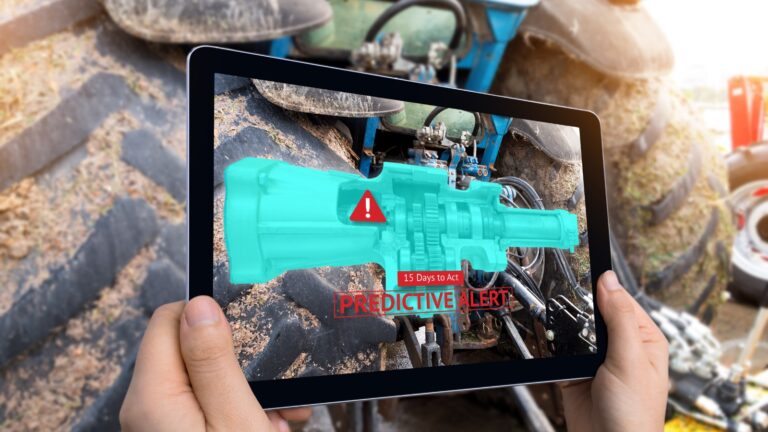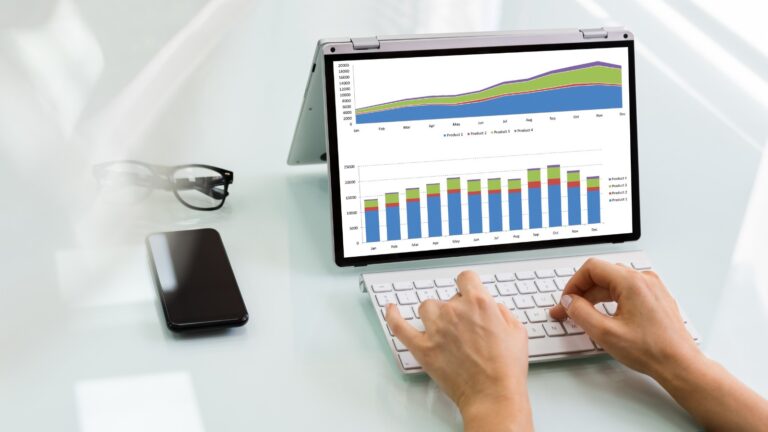In today’s world, the logistics industry is where they take over control of the flow of products, services, and data from one place to another place where consumption happens. This is one industry that has been involved with lots of other sectors, data, and challenges. Singapore’s logistics industry is no exception. Nowadays predictive analytics has been introduced to the logistics industry in Singapore but most logistics service providers are still reluctant in leveraging the power of AI-driven advanced analytical capabilities. Predictive analytics gives the logistics sector the ability to predict and proactively solve problems like demand fluctuations, supply chain interruptions, route optimisation, and inventory management by applying sophisticated data analysis techniques and machine learning algorithms.
In this article, we are going to explore the concept of ‘predictive analytics’ and the connection between Singapore’s logistics industry and advanced analytics. Hence, this article will guide you to learn the capacities of predictive analytics when the logistics industry is concerned.
What Is Predictive Analytics?

Businesses across the supply chain are now expected to easily adapt to shipment patterns, forecast customers’ purchasing behaviours, provide on-time deliveries through the most efficient routes and reduce the risks of cargo inventory errors and incorrect assumptions because the modern logistics market is more demanding than ever before. That is when predictive analytics enters the scenario. The goal of predictive analytics is to foresee future trends, including those affecting supply chain metrics, exchange rates, and sales demand.
To satisfy these rising requirements, logistics companies are now using predictive analytics. In truth, the logistics sector has been most significantly impacted by predictive analytics and it is known as the best invention of this decade for logistics.
So, how do the predictions happen? For example, to detect trends for risks and opportunities within a certain set of circumstances, predictive models employ historical and transactional data. This information aids decision-makers in making predictions about specific future occurrences.
Do not think of this as completely a new concept. Although data analysing had always been there in the scenario, what has changed is computers’ capacity to swiftly evaluate massive volumes of data together with complex data mining techniques that make it possible to examine both organised and unstructured data.
Based on patterns and trends identified by analysing historical data, predictive analytics develops probable theories to determine what is likely to occur. The logistics businesses in Singapore, which has been named Asia’s best logistics centre for ten years running, are becoming increasingly interested in using predictive analytics nowadays.
Top Benefits of Predictive Analytics for the Logistics Industry

Demand Forecasting
Accurately analysing and anticipating demand is one of the biggest problems that logistics companies encounter. Demand patterns are not always linear and depend on a variety of variables, many of which are outside the company’s control. Logistic companies can currently overcome this obstacle and more successfully plan their inventories and shipments thanks to the power of predictive analytics.
Employing predictive solutions allows logistic businesses in Singapore to assess client demand and purchasing patterns weeks or even months in advance. As a consequence, there is less waste and better on-time delivery since they can make educated selections. Predictive analytics also equips logistic businesses with the ability to create precise supply and demand projections, facilitating proactive operational decision-making.
The capacity to efficiently optimise asset allocation across logistic networks is a key advantage of predictive analytics. Singaporean logistic businesses can enhance their capacity for demand forecasting by spotting trends and patterns in historical and recent data, together with market intelligence and economic projections. Demand forecasting is one of the major benefits that logistic companies receive from predictive analytics.
Improved Supply Chain Visibility
When the logistics industry is concerned, transparency between suppliers and distributors is increased via information sharing across the business network of stakeholders. This makes it simpler to keep tabs on their contributions and to record any problems that could affect the delivery. This is what it refers to as supply chain visibility.
Supply chain analytics can help a logistic company more accurately forecast future demand by examining consumer data. The logistics company can use it to determine which logistic strategies can be reduced as they become less profitable or to predict future client wants. That is where predictive analytics plays a major role.
Both shippers and suppliers have completely updated ranges of visibility into the cargo lifecycle nowadays. Predictive analytics is enhancing supply chain visibility, assisting 3PLs in preventing late shipments by monitoring devices, enhancing the visibility of shipment status and location, avoiding costs associated with late or off-schedule shipments, and generating new business opportunities by satisfying visibility requirements.
Managing Transportation
The logistics industry mostly relies on one specific aspect, which is transportation. The truth is the logistics industry is 80% about transportation. The logistics sector in Singapore benefits significantly from predictive analytics since it improves Transportation Management Systems (TMS). To help logistics businesses manage their operations proactively, TMS solutions can employ predictive analytics to anticipate potential disturbances before they happen. This gives logistic companies the ability to properly manage resources, optimise routes, and reduce delays.
Predictive analytics also offers useful insights into demand trends and consumer behaviour, enabling TMS to support smarter decisions for inventory management, production planning, and supply chain optimisation in general. Predictive analytics integration makes TMS a potent tool for optimising logistics operations, increasing effectiveness, and assuring on-time and cost-effective delivery.
Unpredictable Conditions
Can you think of one industry that can survive unpredictable conditions? The truth is there is none! This is undoubtedly one area in which the logistics industry requires predictive analytics. Having the capacity to anticipate short-term behavioural changes that affect the supply chain and logistics is provided by predictive analytics to logistics companies. Operations can be severely impacted by factors including breaking news, weather conditions, product shortages, and factory promotions.
Utilising predictive analytics models, companies can quickly recognise and forecast these unforeseen situations. This enables businesses to respond swiftly to particular and urgent changes in routes or stock levels by immediately adjusting shipments and inventory management. Organisations can enhance their responsiveness, reduce interruptions, and maintain the uninterrupted flow of goods across the supply chain by utilising real-time data and insights, eventually improving operational efficiency and customer satisfaction.
Pricing Strategies
The restrictions imposed by conventional historical cost-plus pricing or fixed margin techniques can be overcome with predictive pricing solutions. Predictive pricing incorporates demand forecasting to dynamically modify prices based on market conditions and consumer willingness to pay, as opposed to just relying on predefined margins or previous data. By establishing pricing that is in line with the capacity of the market, this novel strategy enables firms to maximise income.
The businesses could dynamically alter rates to suit demand swings by assessing real-time data, including demand patterns, competition pricing, and external influences. Prices could rise in order to reflect the higher value that consumers place on the availability of rapid service during peak hours or times of high demand. On the other hand, during times of low demand, prices could be dropped to entice more clients and increase capacity utilisation.
This is the situation where predictive analytics needs to be involved. It is highly necessary for logistic companies to strike a good balance between revenue optimisation and client satisfaction. Predictive pricing can serve this requirement of the logistic companies and they can adapt to changing conditions, profit from peak demand, improve resource allocation and ultimately increase profitability by setting pricing in line with market dynamics. This data-driven strategy frees up the possibility for companies in the Singaporean logistics sector to adapt and prosper in a market that is changing quickly.
Inventory Management
With the implementation of predictive analytics, logistic businesses can decide on the ideal inventory levels to meet demand while reducing stocks. The logistics industry can calculate precise inventory needs by location, consumption, and area using predictive analytics. Huge amounts of information from several sources are examined to provide precise supply and demand projections, establish the best inventory levels, enhance transportation and on-time deliveries, anticipate equipment maintenance concerns, find and react to unforeseen events, and do a lot more.
This allows for the reduction of safety stock levels and the placement of inventory where it is needed. When a company has several distribution sites, this capability is especially helpful since it enables supply chain managers to decide whether stock should be kept centrally or at local facilities.
Order Management
Within logistical companies, predictive analytics is vital for improving order management. Businesses can predict demand trends, improve inventory levels, and simplify order fulfilment procedures by using predictive analytics models. To predict future order volumes precisely, these models take into consideration past data, order history, market trends, and other pertinent variables.
This helps businesses to deploy resources proactively, lowering stockouts and raising customer satisfaction. Predictive analytics also aids in locating possible order management obstructions, enabling businesses to take preventative action and improve efficiency. Predictive analytics can assist logistics companies operate more efficiently, making fewer mistakes, and delivering orders on time, all of which will improve their overall operational performance.
Accelerate Business Growth With Predictive Analytics

Planning and decision-support procedures can potentially be made much more precise with the use of predictive analytics. The use of predictive analytics, as opposed to historical analytics, which solely considers the past, enables logistics companies in Singapore to plan for and predict the future. If you have a startup logistics company or an established one, predictive analytics can accelerate your business growth on a fast track, for the logistics industry predictive analytics is not an option, it is an essential digital upgrade.






